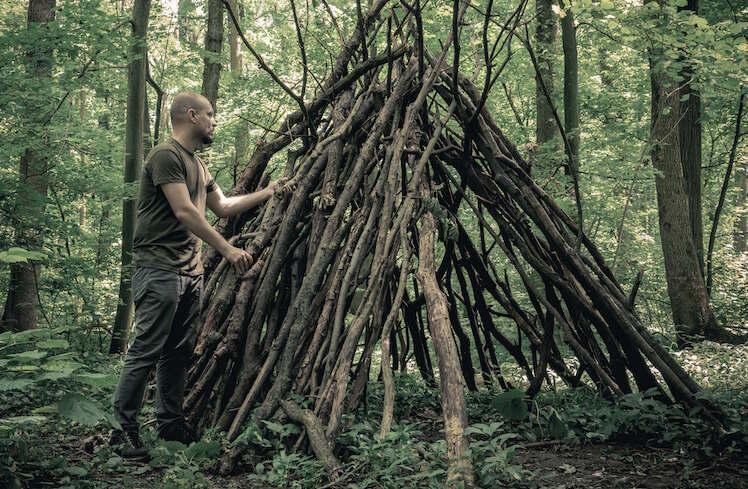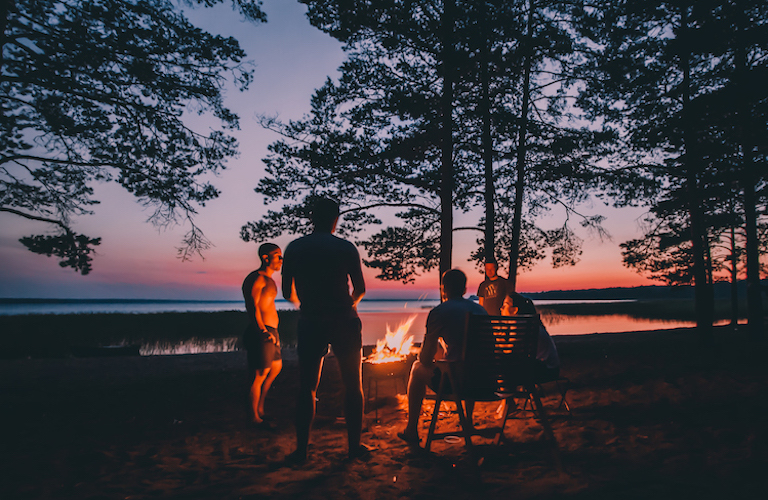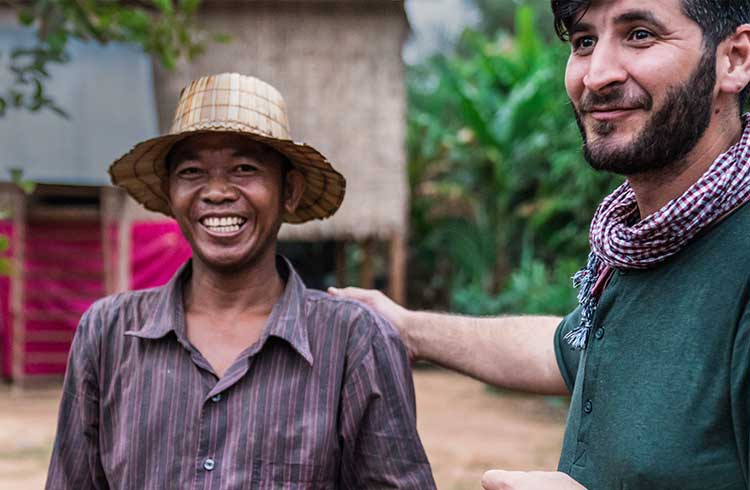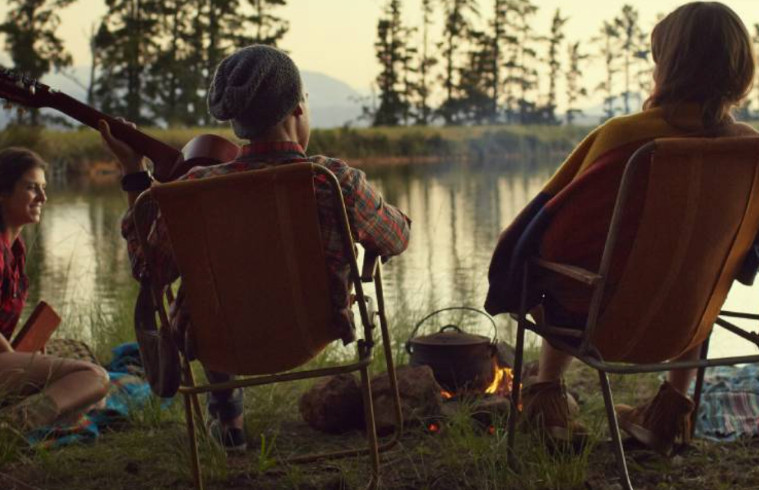How to Build a Fire, Make a Shelter and Cook What You Catch
If you're ever lost in the woods or wilderness, learning these expert skills could keep you alive until rescue comes.
 Photo © Getty Images/ Anton Petrus
Photo © Getty Images/ Anton Petrus
Maybe it’s the zombie apocalypse. Maybe you’re just curious about what it would take to survive in the woods. If there were one person you’d want to help you with either, it’s Joel Van Der Loon, a South African-born master of bushcraft and former participant in the reality TV series Alone. The 36-year-old survival specialist, who learned his first skills from the Maasai as a boy, now lives in the Pacific Northwest of the United States, where he passes his knowledge on to others with online courses. Here he takes us through three key things you need to know to make it through your own worst-case scenario.
How to start a fire
So much depends on a good fire, and not just for warmth. The flames keep predators away and kill parasites in water and meat. The smoke from burning lots of green leaves and pine boughs can also help you get rescued (if that’s your thing).
You often need fire most when conditions are the worst, and if you haven’t tried rubbing sticks together in a non-survival situation — the friction fire method using a bow drill — chances are good you’re going to burn precious calories trying and still end up cold.
Instead, you need a fire-starting device, such as lighter or waterproof matches. “If I had to pick one way to make fire,” Van Der Loon says, “it would be with a ferrocerium rod and synthetic tinder.”
“Ferro rods” are small metal rods that produce a shower of sparks as hot as 3,000 ºF / 1,650 ºC when struck with a striker or the back of a knife. The rods are indestructible, last for thousands of strikes, and can get wet and still work.
First, gather up wood in a range of sizes for your fire – from small kindling up to larger diameter sticks and logs. You’ll also need dry tinder, such as a bunch of dead grasses, the layer of wood between the bark and a live tree, or enough very fine wood shavings from branches to fill your palm. Place the tinder on a flat rock. Cotton balls slathered in petroleum jelly are ideal since they’ll catch quickly and burn for several minutes once ignited. Make them at home before you are shipwrecked.
To direct the sparks into your tinder, do the opposite of what you think you should do. Instead of holding the rod still and striking it with a striker or your knife, put the rod against the rock and into your tinder and hold the striker still as you pull the rod away. When you need a lot of sparks, hold the rod firmly against the rock in your tender and rub the striker back and forth to generate sparks on both the push and pull strokes.
Once you have a flame, add your kindling in a teepee or asterisk shape, gradually adding bigger pieces of wood until you have an established fire. Using your knife to create fine, hair-like curlicues in the wood of larger sticks increases the surface area and will help them ignite.
How to build a shelter

Van der Loon says the most critical consideration when building a shelter is the same as when buying a home: location, location, location. To avoid a mistake, “pay attention to the Ws,” he says.
- Water: you want it to be close but not too close where, say, a flash flood might happen. And, by water, we mean fresh water.
- Wood: you need this nearby for building fires as well as your shelter.
- Widow-makers: these are dead or unhealthy trees that could fall on you during a windstorm. Stay away.
- Wind: find a spot that’s protected from it.
- Wigglies: as in insects. “You don’t want to be building your shelter on top of an ant nest,” he says. “Absolutely miserable.”
In general, you want to build the smallest shelter possible, too. “A shelter works just like clothing,” he says. Make it too big and it’ll be too hard to keep it warm.
A “debris hut,” also called an A-frame, is an ideal structure. It requires no tools and should you be unsuccessful at making a fire, it’s small enough to keep you warm(er), too.
Start off by finding two Y-shaped branches that you can interlock to create an entrance that’s wider than your shoulders. Find another branch that’s longer than you are tall and strong. This will be your ridge pole that runs from the intersection of the interlocking Y branches to the ground to form a sloping tripod. You can raise the ridgepole slightly off the ground by placing it on another log.
Before you enclose the sides, gather up pine needles, leaves, grasses, and anything you can find to create a nest inside at least three inches thick when you lay on it. This will insulate you from the earth. “Your body warmth will never warm up the ground,” Van der Loon says. “It’ll keep sucking your body heat from you.”
Use sticks to form the ribs of your shelter, alternating their placements – left side, right side, left, right, etc. – keeping them as close as possible and at a 45-degree angle to the ridge pole to shed water. The tops should only extend a few inches above the ridge pole. Lay other sticks across the ribs in a cross-hatch pattern to fill as many gaps as you can.
Gather up more grasses, leaves, pine needles, or whatever you can find to pile onto your stick structure to act as insulation. Add the layers from the bottom toward the top, making sure each layer overlaps the previous one. Finish the structure off with a layer of tree bark to help keep water out. Looking up from the inside, you should see no light coming through the roof. Ideally, you’d have a jacket or more grasses to help close off the doorway and seal in your heat.
How to cook what you catch
Hunting and trapping are skills that take lots of practice and instruction – even with modern weapons and tools – and Van der Loon teaches students how to build snares and “deadfall traps” used by Native Americans. Hopefully, you have fishing lines and hooks because catching fish can be the easiest way to eat.
But let’s assume you got yourself a ground squirrel. Now what?
With any sort of ground rodent, fleas are a big concern. “They carry the plague,” Van der Loon notes. To save yourself that fate, however small, build a fire and singe all the fur off your critter, dispatching with the nasties in the process.
How to skin:
- Take your knife and slice off the head and the feet. Claws and teeth aren’t edible
- Make a slice across the middle of the back of the animal, perpendicular to the spine – not along it
- Tuck a figure into each side of your slice so that one digit is facing the neck and the other facing the tail
- Work your fingers in there enough so that you can grab flaps of skin on either side of the incision
- Pull your left hand left, and your right hand right, and the skin should come off like a glove
- Once your animal is skinless, slice the belly open from throat to crotch and remove the guts
- Separate the stomach and intestines from the rest and inspect the liver. It shouldn’t have any discoloration or spots, which means the animal might be diseased
- Save the heart, the liver, the lungs, and the kidneys. That’s all good eatin’, with minerals and fat – the stuff that will keep you alive.
To cook your quarry, you have two options: skewer the animal and roast it over the fire or boil it. Boiling is by far the better method, but it assumes you have a pot. Roasting allows precious fat to drip off into the fire whereas boiling preserves every last calorie and you can drink the broth, too.
What to carry with you
So, now you know. But what would Van der Loon bring to make all of this much easier?
- Ferro rod with cotton balls greased in petroleum jelly
- Knife
- First aid kit
- Emergency space blanket
- Water purification tablets
- A signal mirror and a whistle
- Small flashlight
- High-calorie energy bar or a jar of peanut butter
- Fishing line and fishing hooks
- A container, such as a pot for boiling water and cooking.
Good luck out there.



No Comments